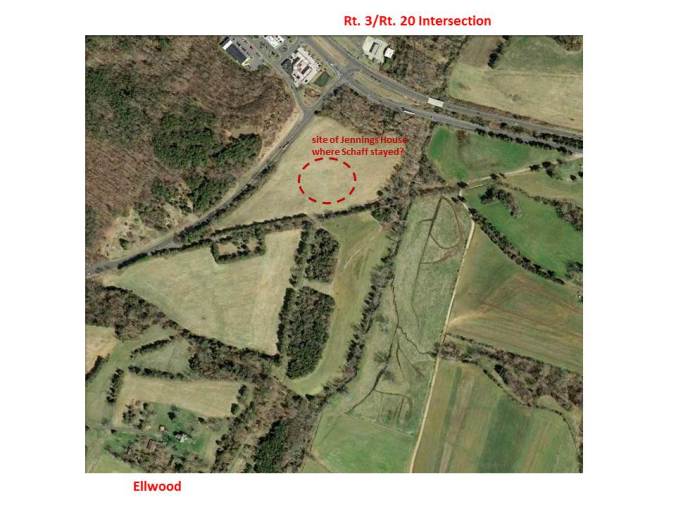from: Harrison
With the park having concluded sesquicentennial observances of the four battles within its historical bailiwick, I’d like to consider how those engaged the imagination once the guns fell silent. Readers of this blog may recall my interest in the literary aspects of early commentary on the fighting. What follows is adapted from a “History at Sunset” program that I presented recently on supernatural imagery, used by some chroniclers of the Civil War generation in describing Chancellorsville, the Wilderness, and the vast tract of woodland encompassing both.
I drew inspiration from Union veteran Morris Schaff’s The Battle of the Wilderness, published in 1910. It’s the most unique history I’ve read of a Civil War battle. It’s also the first book to be devoted solely to the two-day clash of May 1864, not to be supplemented in that category until Edward Steere published The Wilderness Campaign half a century after Schaff’s volume appeared.

Houghton-Mifflin’s advertising for the serialized version of Schaff’s book, Atlantic Monthly, March 1909.
Schaff’s publisher, Houghton-Mifflin of Boston and New York, had serialized the book in their magazine, The Atlantic Monthly, beginning in June 1909. Schaff’s study was thus distributed widely and essentially twice. (The publishers seemed delighted with its reception, inviting him to write an article-length sequel and running that in Atlantic in 1911.)
Readers across the country had this first-ever, book-length encounter with the Battle of the Wilderness in a profoundly strange atmosphere. Schaff’s text swerved back and forth from the conventional to the unconventional, from straightforward terrain- and tactics analysis to supernatural interventions. In 1911, a reviewer for The Nation spent several column-inches trying to finalize his thoughts about Schaff and concluded, “We applaud the writer who, while framing a military treatise, can at the same time make it a new ‘Alice in Wonderland.’” In this blog post, let’s consider the conventional and even “cutting-edge” aspects of The Battle of the Wilderness. These highlight through contrast the weird aspects (next post), as strange now as in 1910.
At the battle of the Wilderness, the 23-year-old Schaff served on the staff of Fifth Corps Commander Gouveneur K. Warren. Some of Schaff’s detailed descriptions of what he saw would become popular among later historians, especially his detailed, vivid recollection of Warren meeting with other staffers in the Lacy House, “Ellwood,” and urging them to reduce the casualty return for his corps.

Ellwood and environs. For visitors to the Wilderness today, Morris Schaff is probably best known for his striking account of an episode in the Lacy house, “Ellwood,” involving a casualty tally and a brief but vivid description of one of its rooms. Virtually unknown is his ambitious effort to understand many other aspects of the battle. This entailed Schaff making at least one postwar visit, when a Mr. and Mrs. Jennings hosted him, possibly at a now-vanished structure that appears on a 1930’s map.